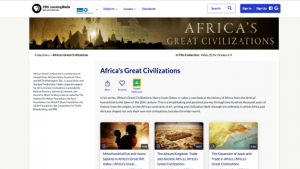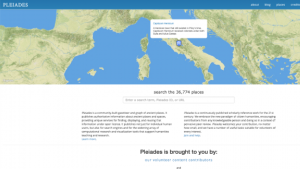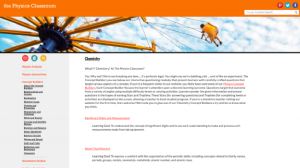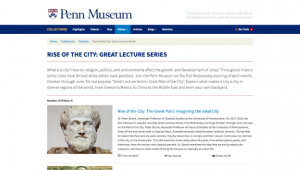Theme: Ancient Civilizations
Back to Top
|
 |
|
The History of Byzantium
|
Social studies |
|
Launched in 2012, The History of Byzantium is a podcast with the ambitious aim to cover "the story of the Roman Empire from the collapse of the West in 476 to the fall of Constantinople in 1453." It is hosted, researched, and produced by Robin Pierson, a London-based podcaster and television critic who was inspired by Mike Duncan's popular podcast The History of Rome to continue the story with the centuries that followed Rome's collapse. The History of Byzantium narrates this lengthy period in chronological order, so those who want to hear the whole story would do well to start at the beginning, but Pierson's cogent storytelling makes it enjoyable for the listener at any point of entry. Episodes are generally about 20 to 30 minutes long. There are also occasional longer episodes centered on particularly dramatic historical events, such as the Battle of Manzikert (Episode 193), or interviews with scholars in the field. Interested readers can download episodes of The History of Byzantium and see images and Pierson's bibliography of recommended reading at the link above. Those interested in subscribing to the podcast can do so via Spotify, Stitcher, and other platforms. [JDC] |
|





|
|
 |
|
PBS LearningMedia: Africa's Great Civilizations
|
Social studies |
|
Middle and high school social studies and history teachers may be interested in this set of course materials from PBS LearningMedia. These resources were created to supplement the 2017 PBS documentary series Africa's Great Civilizations, hosted by Harvard University professor Henry Louis Gates, Jr. Here readers will find five video clips selected from this documentary series, with time periods ranging from the dawn of Homo sapiens in Africa's Great Rift Valley to the Berlin Conference of 1884-1885 and the imperialistic Scramble for Africa, with stops in places like the Aksum Kingdom and Queen Njinga Mbandi's kingdoms of Ndongo and Matamba along the way. Each 5- to 10-minute video clip also has a variety of accompanying support materials, including: short contextual background readings, vocabulary lists, suggestions for classroom activities and discussion questions, links to additional resources, and lists of relevant educational standards. These educational materials were assembled with students in grades 6-9 in mind, but instructors of other levels may also find them useful. [JDC] |
|





|
|
 |
|
Pleiades
|
Social studies |
|
Geography aficionados and readers who appreciate the ancient world may want to check out Pleiades, a resource billing itself as "a community-built gazetteer and graph of ancient places" that "gives scholars, students, and enthusiasts worldwide the ability to use, create, and share historical geographic information about the ancient world in digital form." Visitors may like to begin by exploring this project's more than 36,000 places, a random selection of which appear in the slideshow on the main page. Rather than traditional GIS layers, this intriguing project organizes its data into conceptual places, spatial locations, and identifying names, all of which are connected together to create reference information hubs. Those interested in downloading data or contributing to Pleiades should be sure to visit its Blog and Help sections. As of this write-up, the site has "extensive coverage for the Greek and Roman world, and is expanding into Ancient Near Eastern, Byzantine, Celtic, and Early Medieval geography." Pleiades was created as a joint project of the University of North Carolina's Ancient World Mapping Center, the Stoa Consortium, and New York University's Institute for the Study of the Ancient World. [JDC] |
|





|
|
 |
|
 |
|
Ancient Asia: Journal of the Society of South Asian Archaeology
|
Science |
|
The open-access journal Ancient Asia, published by Ubiquity Press, is the official publication of the Society of South Asian Archaeology. In addition to providing "a dedicated platform where young archaeologists can present their research and views openly," this peer-reviewed academic journal aims to "bring forth the research being conducted in areas that are not often well published such as the North Eastern States of India, Bangladesh, Bhutan, Nepal, Sri Lanka, Central Asia, Iran, etc." Here, visitors can browse and download scholarly articles on a range of fascinating topics, such as early medieval landscapes of Assam, Iron Age material culture in South Asia, and Paleolithic sites in the Khuzestan province of Iran. First launched in 2006, as of this write-up the journal is in its 10th volume. The editor-in-chief of Ancient Asia is Dr. Vasant Shinde, a professor of archaeology at Deccan College Post Graduate and Research Institute in Pune, India. The journal's editorial board hails from academic institutions around the world, including Seoul National University in South Korea, the University of Wisconsin-Madison, and the British Museum. [JDC] |
|





|
|



















